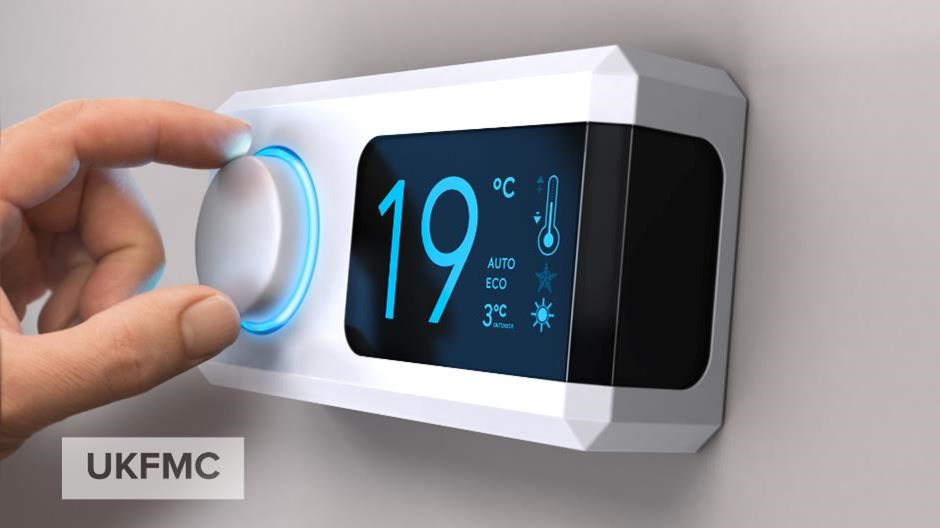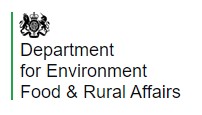1. Working in extreme temperatures
Working in cold temperatures
The minimum temperature in an indoor workplace should normally be at least:
- 16°C or
- 13°C if much of the work involves rigorous physical effort
There are practical steps employers can take to keep people as comfortable as possible when working in the cold.
Working in hot temperatures
There’s no law for maximum working temperatures, or when it’s too hot to work, because every workplace is different.
No meaningful upper limit can be imposed because in many indoor workplaces high temperatures are not seasonal but created by work activity, for example in bakeries or foundries.
However, employers must stick to health and safety at work law, including:
- keeping the temperature at a comfortable level
- providing clean and fresh air
How can employers protect workers?
There are practical steps employers can take to protect workers in high or low temperatures. Workers should talk to their employer if the workplace temperature isn’t comfortable.
Outdoor working
Working outdoors in hot or cold environments for long periods of time can affect workers’ health. The HSE have guidance on how employers can protect people from the risks of outdoor working.
What if a job involves extreme temperatures?
In some workplaces extreme temperatures can be created by the work activity, such as some manufacturing processes. These temperatures can lead to serious health effects if not managed effectively.
Employers and employees can find advice from the Health and Safety Executive (HSE) for working in very high or low temperatures, for example on heat stress, dehydration or cold stress.
2. What does the law say?
The UK Workplace (Health, Safety and Welfare) Regulations require employers to provide a reasonable indoor temperature in the workplace.
This depends on the work activity and the environmental conditions.
The Construction (Design and Management) Regulations require reasonable workplace temperatures for indoor areas of construction sites.
Where the site is outdoors, you must provide protection from adverse weather. Site rest facilities must also be maintained at an appropriate temperature.
Assessing the risks
Under the Management of Health and Safety at Work Regulations, employers must:
- assess the risks to workers
- put controls in place to protect them
Temperature in the workplace is one of the risks employers should assess, whether the work is being done indoors or outdoors.
Employers should consult with workers or their representatives on the best ways to cope with high or low temperatures.
What is a reasonable working temperature?
Employers must decide what a reasonable temperature should be in your workplace:
- assess the risk
- act on any findings by putting controls in place, including temporary or seasonal ones
- use the HSE’s heat stress checklist (PDF) if workers are at risk from extreme temperatures
3. Managing workplace temperatures
This page employer’s responsibilities and suggests ways to manage the temperature in a workplace to protect workers.
How you manage the effects of temperature depends on:
- whether the workplace is indoors or outdoors
- the normal operating temperature of that environment
Indoor workplaces
Employers should provide:
- a reasonable working temperature in workrooms – usually at least 16°C, or 13°C for strenuous work
- local heating or cooling (using fans, opening windows, using radiators) where a comfortable temperature cannot be maintained throughout each workroom, such as in hot and cold manufacturing processes
- rest facilities where necessary, e.g., for hot work or warm clothing in cold stores
- heating systems which do not give off dangerous or offensive levels of fume into the workplace
Outdoor workplaces
There is separate advice for those working outdoors.
When people are too cold
Employers can take these practical steps to keep people as comfortable as possible when working in the cold:
- Provide adequate workplace heating, such as portable heaters, to ensure work areas are warm enough when they are occupied
- Design processes that minimise exposure to cold areas and cold products
- Reduce draughts while still keeping adequate ventilation
- Provide insulating floor coverings or special footwear when workers have to stand for long periods on cold floors
- Provide appropriate protective clothing for cold environments
Employers can also change work systems:
- Limit exposure by introducing systems such as flexible working patterns or job rotation
- Provide enough breaks to allow workers to get hot drinks or warm up in heated areas
When people are too hot
Employers can help ensure people are comfortable in warm conditions:
- Provide fans, such as desk, pedestal or ceiling-mounted ones
- Provide air-cooling or air-conditioning and adequate ventilation
- Ensure windows can be opened to keep air circulating
- Shade employees from direct sunlight with blinds or by using reflective film on windows
- Position workstations away from direct sunlight or sources of heat
- Place insulating materials around hot plant and pipes
- Provide cold water dispensers (water is better than caffeine or carbonated drinks)
Employers can also change work arrangements to avoid people getting too hot:
- Introduce flexible working patterns, such as job rotation, moving workers to cooler parts of the building where possible
- Allow enough breaks to allow workers to get cold drinks or cool down
- Relax formal dress codes – but make sure personal protective equipment is used if required
The HSE have advice on assessing the risks of heat stress and protecting workers from it.
PPE and workplace temperature
Personal protective equipment (PPE) reduces the body’s ability to evaporate sweat. If the PPE is awkward to wear, or heavy, it may contribute to an increase in body heat.
Wearing PPE in warm/hot temperatures with high work rates may increase the risk of heat stress.
How to keep workers safe wearing PPE
Encourage workers to remove PPE immediately after it is needed. This will prevent any heat retained in their clothing from continuing to heat them. Where necessary, they should allow it to dry out, or replace it, before using PPE again.
PPE may prevent workers removing clothing in case it exposes them to the hazard it is protecting them from.
Where PPE is required, it can cause heat stress due to its weight and the fact that it prevents sweat evaporating from the skin. In these situations, employers should:
- allow slower work rates
- rotate staff out of this environment on a more frequent basis
- allow longer recovery times
- provide facilities for PPE to be dried so it can be worn again
- consider scheduling work to cooler times of the day
- review your risk assessment to see if automated or alternative systems of work can be introduced
- re-evaluate your equipment as newer PPE may be lighter and provide improved levels of protection and operator comfort
Make sure people continue to wear PPE correctly despite workplace temperatures. For example, they should not endanger themselves by undoing fasteners to increase air movement into clothing.
People can sometimes wear too much PPE so employers should always look at the reasons for using it. For example:
- Can workers wear less PPE and still have the protection they require or may other controls reduce or eliminate the need for it?
- Can the task be automated or can employers adopt additional or more effective safeguards?
The HSE’s PPE at work pages provide further advice, including selecting the most appropriate equipment for your workplace.
Very high or low workplace temperatures
The HSE have specific advice for workplaces if you are working in very high or low temperatures, for example on heat stress, dehydration or cold stress.
If workers are complaining or reporting illnesses that may be caused by temperatures in workplaces, review the situation and, if necessary, put in place controls to manage the risks. Employers may need to:
- monitor how workplace temperatures are affecting workers as part of your risk management
- put health surveillance or medical screening in place for workers who are pregnant, have illnesses or disabilities, or are taking certain medication
- review working habits and current practices and (where necessary) change these to control the risks

4. How workers can keep temperatures comfortable
We explain what employers can do if think there is a problem with temperature in a workplace.
Staff may have to work with employers and other workers to get permission to take some of the steps below. By working together, it will be more likely that suitable, long-term solutions will be found.
What can workers do?
Here are some things workers can do to make a workplace temperature more comfortable:
- Add or remove layers of clothing, depending on how hot or cold
- Use a desk or pedestal fan to increase air movement
- Use window blinds to reduce the heating effects of the sun
- If it is too warm drink plenty of water (avoid caffeinated or carbonated drinks)
- If possible, work away from direct sunlight or sources of heat, such as machinery
- Take regular breaks to cool down in hot conditions or heat up in cold ones
If workers have any issue with the temperature, it should be reported to the manager, or union or workplace representative if there is one.
What should employers do?
Employer should already be assessing the risks, talking to workers and agreeing control measures to protect them.
If workers are reporting or complaining about uncomfortable temperatures, employers should reassess the risks, agree actions with workers and act on the results.
Employers should talk to workers about things they can do. These could include:
- making sure windows can be opened or closed
- providing fans to cool the air or local heaters
- checking air conditioning units are maintained
- introducing flexible hours or early/late starts to avoid high or low temperatures
- relaxing formal dress codes to allow fewer or more layers of clothing
- insulating hot machinery or pipes
- moving workstations away from hot machinery or out of direct sunlight
5. Outdoor working
When working outdoors, the weather can have a serious impact on worker’s health if the risks have not been properly managed.
This impact may be immediate or occur over a longer time, leading to conditions like skin cancer.
The weather can also affect a worker’s ability to keep safe, for example when handling machinery.
There are simple actions employers can take to protect people working outdoors.
Cold environments
- Ensure the personal protective equipment issued is appropriate
- Provide mobile facilities for warming up, and soup or hot drinks
- Introduce more frequent rest breaks
- Consider delaying the work until warmer times of the year without compromising on safety
- Make sure workers can recognise the early symptoms of cold stress, such as a cough or body aches
Hot environments
- Reschedule work to cooler times of the day
- Provide more frequent rest breaks and introduce shading to rest areas
- Provide free access to cool drinking water
- Introduce shading in areas where people are working
- Encourage workers to remove personal protective equipment when resting to help encourage heat loss
- Make sure workers can recognise the early symptoms of heat stress
Working in the sun
Too much sunlight can cause skin damage including sunburn, blistering and skin ageing. In the long term, it can lead to an increased risk of skin cancer.
6. Dehydration
When working in very hot conditions, dehydration can seriously affect a worker’s health and their ability to function safely.
How to reduce the effects of dehydration
- Employers should encourage workers to frequently drink cool water (rather than tea, coffee or carbonated drinks)
- It is better to drink in small amounts to compensate for the effects of sweating
- Employers should not rely on workers saying they are thirsty. It is not a good indicator of dehydration, more an early sign that they are starting to suffer from its effects
- When working at a high rate in heat stress conditions, workers should drink around 250 ml (half a pint) every 15 minutes
- If workers are exposed to heat stress conditions, employers should encourage them to be adequately hydrated before they come to work
Where ability to drink is restricted
Some situations make it harder for workers to drink, for example if they are wearing personal protective equipment (PPE).
In these situations, employers could encourage workers to drink:
- 500 ml (a pint) of water per hour before work starts
- the same amount during their rest periods
If water loss is significantly greater through increased sweating, then workers should increase the amount they drink proportionately.
Even if workers replenish lost sweat with equal amounts of water, they may still be dehydrated due to lost salt from the body. It is therefore a good idea to have drinks that contain the salts needed.
7. Heat stress
The guidance is mainly for workplaces where heat stress is an issue all year, such as bakeries and foundries.
It will also help employers protect workers in very hot weather where there may be an increased risk.
What is heat stress?
Heat stress happens when the body’s way of controlling its internal temperature starts to fail. As well as air temperature, factors such as work rate, humidity and work clothing may lead to heat stress.
Employers and workers must be aware of how to work safely in high temperatures. This means identifying the factors that can cause heat stress, and how to avoid it.
A typical heat stress situation
Someone wearing protective clothing and doing heavy work in hot and humid conditions could be at risk because:
- sweating is restricted by clothing and humidity
- body heat increases due to work rate and, so core body temperature rises
- the body reacts by producing more sweat, which may cause dehydration
- heart rate also increases, putting more strain on the body
Symptoms of heat stress
Heat stress can affect people in different ways, and some are more likely to suffer it than others.
Typical symptoms are:
- an inability to concentrate
- muscle cramps
- heat rash
- severe thirst – a late symptom of heat stress
- fainting
- heat exhaustion – fatigue, dizziness, nausea, headache, moist skin
- heat stroke – hot dry skin, confusion, convulsions and eventual loss of consciousness. This can result in death if not detected at an early stage
Where does heat stress occur?
Examples of workplaces where people might suffer from heat stress due to hot environments created by the process, or restricted spaces, are:
- glass and rubber manufacturing plants
- compressed-air tunnels
- power plants
- foundries and smelting operations
- brick-firing and ceramics plants
- boiler rooms
- bakeries and catering kitchens
- laundries
People adapt to hot conditions by cooling down through removing clothing, having cool drinks, using the shade, or reducing work rate. However, in many work situations such changes may not be possible, for example during asbestos removal.
How do employers assess the risks?
Where there is a possibility of heat stress occurring, employers must assess the risks to workers by considering:
- work rate – the harder someone works the more body heat generated
- working climate – this includes air temperature, humidity, air movement and working near a heat source
- work clothing and personal protective equipment (PPE)– these may prevent sweating and other ways of regulating temperature
- a worker’s age, body type and medical factors (e.g., a hormonal imbalance) may affect their tolerance of heat
Firstly, employers should talk to workers (and their safety representatives) to see if they are suffering early signs of heat stress. If there is a problem, some expert advice from occupational health professionals may be needed.
The HSE have a heat stress checklist (PDF) to help employers control the risks.
How can employers reduce the risks?
Remove or reduce the sources of heat where possible.
Control the temperature
Control the temperature using engineering solutions, for example:
- change the processes
- use fans or air conditioning
- use physical barriers to reduce exposure to radiant heat, for example machinery
Limit work rate and length of exposure
Provide mechanical aids where possible to reduce the work rate.
Regulate the length of exposure to hot environments by:
- only allowing workers to enter the workplace when the temperature is below a set level or at cooler times of the day
- issuing permits to work that specify how long people should work in situations where there is a risk
- providing periodic rest breaks and rest facilities in cooler conditions
Prevent dehydration
Working in the heat causes sweating which means losing vital water that must be replaced. Provide cool water in the workplace and encourage workers to drink it frequently and in small amounts.
If it is not possible to drink while working, for example during asbestos removal, encourage workers to drink before and after the work to avoid dehydration.
Personal protective equipment (PPE)
Protective clothing or equipment may expose the employee to heat stress.
Specialised personal protective clothing is available which incorporates, for example, personal cooling systems or breathable fabrics.
This may help protect workers in certain hot environments.
Training
Employers should provide training for workers, especially if they are new or young, telling them about:
- risks of heat stress in their work
- what symptoms to look out for
- safe working practices
- emergency procedures
Acclimatisation
Allow workers to acclimatise to their environment and identify which ones are assessed as fit to work in hot conditions.
Identify who is at risk
Identify workers who are more susceptible to heat stress. This could be due to inexperience, medication or a condition making them more vulnerable to heat stress, e.g., heart disease.
Employers may need advice from an occupational health professional or medical practitioner.
Employer’s risk assessment should already address risks to pregnant workers. However, it should be reviewed when a worker informs that they are pregnant, to help decide if there’s a need to do any more to control the risks.
Monitor health
Where a residual risk remains despite your control measures, employers may need to monitor the health of workers exposed to the risk.
Employers should seek advice from occupational health professionals experienced in the risks associated with heat stress.
8. Cold stress
The Approved Code of Practice on the Workplace (Health, Safety and Welfare) Regulations suggests the minimum temperature for working indoors should normally be at least:
- 16°C or
- 13°C if much of the work involves rigorous physical effort
Employers will be likely to comply with the law if working in line with the British Standards listed below but compliance can be demonstrated by other means.
General advice on working in cold temperatures
The HSE have broad advice on protecting workers from cold weather.
The HSE also have advice for specific industries where people are exposed to very low temperatures, for example when working with chilled and frozen products.
British Standards for cold stress in the workplace
The main standards that apply to the development of adequate risk assessments are listed below to act as a starting point.
- BS EN 511: Protective gloves against cold
- BS EN ISO 13732-3: Ergonomics of the thermal environment. Methods for the assessment of human responses to contact with surfaces
- BS 7915: Ergonomics of the thermal environment. Guide to design and evaluation of working practices in cold indoor environments
- DD ENV ISO 11079: Evaluation of cold environments. Determination of required clothing insulation (IREQ)
- BS EN ISO 15743: Ergonomics of the thermal environment. Cold workplaces. Risk assessment and management
These standards are available from BSI Group.
Business Facilities Management is a specialist field, in which UKFMC possesses a wealth of knowledge and experience, consequently we are fully compliant with all relevant legislation; in addition we can offer support and advice on all aspects of Facilities Management.
This information is licensed under the Open Government Licence v3.0. except where otherwise stated.







